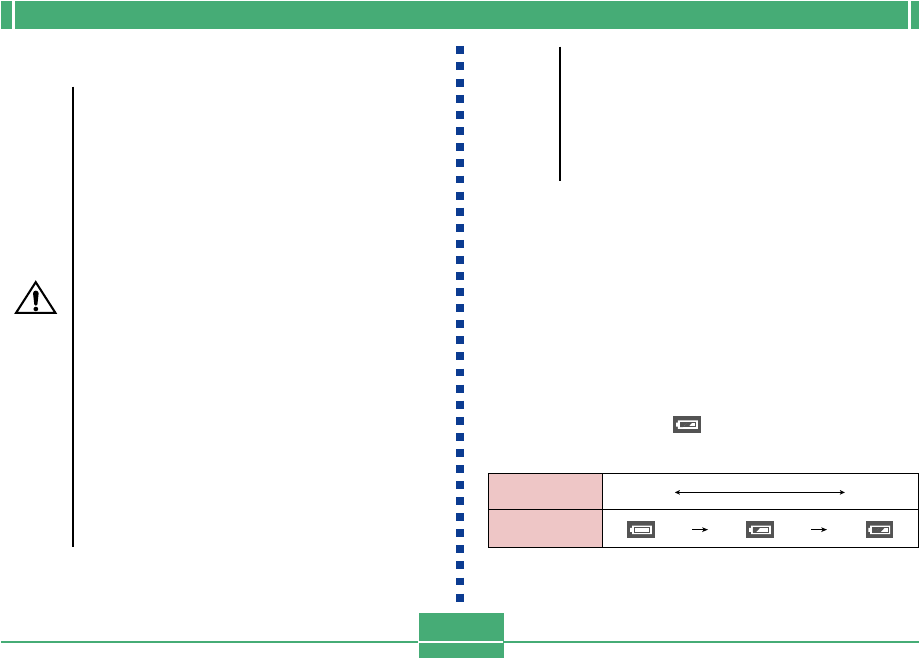
GETTING ACQUAINTED
34
• Remove batteries from the camera if you do not plan to use
it for more than two weeks.
• The batteries that power the camera normally become
warm as they discharge.
Battery Handling Precautions
Caution!
● Incorrect use or handling of batteries can
cause them to leak or burst and create the
danger of serious damage to your camera. Be
sure to note the following important precau-
tions to avoid problems with batteries.
• Always make sure that the plus (+) and mi-
nus (–) ends of the batteries are facing cor-
rectly, as noted by the markings on the cam-
era itself. Improper loading of batteries can
result in bursting or leaking of batteries, cre-
ating the danger of personal injury or soiling
of objects nearby.
• Never mix old batteries with new ones. Do-
ing so can result in bursting or leaking of bat-
teries, creating the danger of fire or personal
injury.
• Never mix batteries of different types.
• Use only LR6 type alkaline or FR6 type
lithium or Ni-MH (nickel-metal hydride) dry
cell batteries with this camera.
● Never recharge non-rechargeable type batter-
ies, never allow direct connection between
two ends of a battery, and never try to take
batteries apart.
● Do not expose batteries to direct heat or dis-
pose of them by burning. Doing so can create
the danger of explosion.
● Dead batteries are susceptible to leakage,
which can cause serious damage to your cam-
era. Remove batteries from the camera as
soon as you notice they are dead.
Low Battery Indicator
The following shows how the battery capacity indicator on
the monitor screen and the indicator display changes as bat-
tery power is used. Replace all four batteries as soon as pos-
sible after they go dead. If you continue to use the camera
while the battery level is , camera power will automati-
cally turn off.
Battery
Capacity
High
Low
Monitor
Screen


















